Should I put gravel on the bottom
This is my second year with container tomatos. Last year I added approximately 2 inches of gravel as the bottom layer of 15 gallon containers. The containers have drainage holes. I added the gravel based upon some advice. Reading through these posts, I now think I should skip the gravel? Do you agree or disagree?
Comments (38)
tapla (mid-Michigan, USDA z5b-6a)
15 years agolast modified: 9 years agoUnless you're using it as ballast - I agree. It's ineffective as an "aid to drainage".
Al
justaguy2
15 years agolast modified: 9 years agoskip the gravel, it does nothing to improve drainage and just makes the container heavier (which isn't always a bad thing).
The potting mix you use is going to drain well or it isn't.
If it doesn't drain well then it isn't going to drain into the gravel any more than it will drain out the drainage hole in the container. With or without gravel at the bottom the mix is going to hold all the water it is physically capable of and no more. The saturation point will either allow for air to remain or it won't.
If you have to use a mix that doesn't drain well you are better served by a wick hanging outside the drainage hole than gravel at the bottom of the container. Even better, use a mix that drains well and maintains air spaces even when saturated.
Related Professionals
Paradise Landscape Architects & Landscape Designers · Fort Payne Landscape Contractors · Fort Worth Landscape Contractors · Framingham Landscape Contractors · Greenfield Landscape Contractors · New Lenox Solar Energy Systems · Fort Myers Window Contractors · Marietta Window Contractors · Detroit Window Contractors · Greenburgh Window Contractors · Linthicum Window Contractors · Bellmawr Fence Contractors · Brea Fence Contractors · Madison Fence Contractors · Sacramento Fence Contractorsgreenwood85
15 years agolast modified: 9 years agoI'm going to put a layer of gravel at the bottom of my containers to weigh them down and lower their center of gravity to help battle the wind.
If it helps with drainage, too, that's just a bonus.
Dan _Staley (5b Sunset 2B AHS 7)
15 years agolast modified: 9 years agoIf it helps with drainage, too, that's just a bonus.
It won't. It will create a perched water table that will require the entire soil column be wet before draining out the bottom.
Dan
justaguy2
15 years agolast modified: 9 years agoIt won't. It will create a perched water table that will require the entire soil column be wet before draining out the bottom.
Well, the gravel itself won't create a perched water table. If the potting mix does the gravel will do nothing to remove it. The presence of gravel at the bottom is going to have virtually no effect on drainage good or bad.
the_tank
Original Author15 years agolast modified: 9 years agoThanks everyone. Based on these posts I am going to skip it with my additions this year. I'm using a pottig mix that drained well. Since they are 15 gallon, I'm going to gamble that they won't blow or fall over.
gardengal48 (PNW Z8/9)
15 years agolast modified: 9 years agoMy understanding of this issue is a bit different. A layer of gravel on the bottom of the container DOES affect drainage. It has to do with soil interface issues or how water moves through various materials. When you layer various materials of different textures like potting soil on top of gravel or even fresh potting soil on top of old, the difference in textures slows water movement. It is the same principle behind not amending individual planting holes - the water will accumulate in the amended soil but not pass smoothly or evenly through the non-amended indigenous soil.
For this reason, I never recommend adding a layer of gravel or pot shards or whatever to improve drainage - it doesn't. In fact, it impedes good drainage. For the same reason I discourage the use of packing peanuts or crushed pop cans or what have you to lighten the weight of larger containers or reduce the quantity of needed soil. It works the same way.
Here is a link that might be useful: Myths of Container Drainage
katskan41
15 years agolast modified: 9 years agoI agree, gravel or rock is probably not a good idea. I've asked Al and others about this very thing and the answer is almost always a resounding "NO".
It's often windy on our property and I used to add pea gravel at the bottom of containers for extra weight to prevent tipping over in wind. Now I either try to secure the continers via stakes or move them to a more sheltered location, away from strong winds.
My two cents worth...
Dave
Dan _Staley (5b Sunset 2B AHS 7)
15 years agolast modified: 9 years agoA layer of gravel on the bottom of the container DOES affect drainage. It has to do with soil interface issues or how water moves through various materials. When you layer various materials of different textures like potting soil on top of gravel or even fresh potting soil on top of old, the difference in textures slows water movement. [emphases added]
This is correct and why I wrote what I did above. The reason is surface tension.
In addition, the principle is similar in the garden when making raised beds, mounds, etc. When making these, you must incorporate the added soil into the existing soil to avoid creating a perched water table.
Long ago when I used to do tree hazard assessment, one of the checkboxes on the checklist was "mound planting". Often if trees fail on mounds it is because the mounds were not incorporated into extant soil and the tree roots rotted in the too-wet soil at the interface of mound and native soil.
Hope this helps.
Dan
Dan _Staley (5b Sunset 2B AHS 7)
15 years agolast modified: 9 years agoNow I either try to secure the continers via stakes or move them to a more sheltered location, away from strong winds.
This is a good idea. When I used to own my landscape design business, I would secure my clients' large pots from theft by bent rebar driven into the ground through a drainage hole, then filling with soil. This prevents tipping as well, esp if you use two pointed in the opposite direction.
Dan
tapla (mid-Michigan, USDA z5b-6a)
15 years agolast modified: 9 years agoI missed your posts until you linked to them, Dan. About: "The reason is surface tension." Actually, surface tension is only a part of the equation when we discuss PWTs. The primary forces at work are adhesion, and cohesion which combine to create capillarity which works together with soil particle size(s) to create PWTs of varying heights, or if particle sizes are large enough - no PWT.
"When making these, you must incorporate the added soil into the existing soil to avoid creating a perched water table. Actually, this is not true. I think I dispelled this HERE, at the Square Foot Forum.
Also, you said that "(a drainage layer) will create a perched water table that will require the entire soil column be wet before draining out the bottom." which is also not true. If you have (pick a number, let's say 3") of gravel at the bottom of the container and a soil that supports (pick a number - let's say 4") inches of perched water, it is impossible, regardless of container shape, of how deep the the gravel is, or of how deep the soil is, for the soil to support more than 4" of perched water - and immediately upon the PWT reaching the 4" mark. water will begin to drain through the gravel and out the drain. According to what you said, if we were growing in a 24" deep container that was full of a soil that supported a 4" PWT, the 24" of soil above the gravel would have to be saturated before any water would drain, and that is simply not so. I think your logic is incorrect and based on an incorrect premise. ;o) Sound familiar?
I was thinking about this, too: "the difference in textures slows water movement". This may or may not be true, depending on the application, but we don't really care about 'slow', as long as it's not ridiculously slow, like hours & hours. What we care about is whether or not water will naturally perch in a container, and for how long, and for strategies to remove that excess water when it's advantageous and to perhaps even use it when we're sure it won't remain so long it compromises root metabolism/function.
Take care.
Al
filix
15 years agolast modified: 9 years agoI'm glad you came in on this Al. Because it didn't make sense to me. And I was going to say something, "based on what I have learned from you" But I type SO slow. filix.
Dan _Staley (5b Sunset 2B AHS 7)
15 years agolast modified: 9 years agoAl,
One can choose to get deeply technical or not. I won't spend time deconstructing your confused argumentation here and elsewhere, but the issue is hydraulic conductivity, capillarity and adsorption (and you dispelled zero notions at the SFG forum).
For anyone who may be confused, here is a link the Colo Extension publishes for flower pots. No gravel on the bottom; there is an illustration as well that helps folks understand.
Why? The potting soil medium must have sufficient head to 'cross the gap' of differing particle sizes, and thus there is constant moisture at the bottom of the potting medium - the water level at the bottom of the pot is actually raised, not lowered.
As an undergrad student in soils lab, much time was spent by the prof and TAs to get us to understand the concept of head and conductivity, and how water moves thru soil and why. Why was much time spent? Because many of the concepts are counterintuitive until you see for yourself how Van der Waals forces work.
Again, bottom line: no gravel. Use rebar thru the holes to secure, or stakes on the outside to prevent tipping. As so many others above wrote.
Dan
justaguy2
15 years agolast modified: 9 years agothe water level at the bottom of the pot is actually raised, not lowered.
I think you and Al may be talking past each other.
I selectively quoted your above statement to illustrate how I think the two of you may be talking past one another (and confusing the heck out of the rest of us in the process ;)
Allow me my own approach please:
Will adding gravel to the bottom of a container raise the perched water table?
Yes and no.
No, it will not increase the depth of the perched water in inches.
Yes, it will raise the area within the container that holds the perched water.
Please allow me to further clarify:
If we have a 12 inch deep container filled with a mix that supports a 4" perched water table we then have
1. 8" of potting mix with no perched water (good growing area)
- 4" of perched water (bad growing area).
If we add a 3" layer of gravel to the bottom of the container we now have:
1. 5" of potting mix with no perched water
2. 4" of perched water
3. 3" of gravel that will do nothing to help drainage.We are now worse off with the gravel because the total depth of good growing area has been reduced from 8" to 5" on account of the 3" of gravel at the bottom.
Would either of you disagree? (I am begging you both to 'just say no':)
Dan _Staley (5b Sunset 2B AHS 7)
15 years agolast modified: 9 years agoPerfect, justaguy. TBH, I'm confused by certain replies as well.
Nonetheless, your explanation is exactly correct, and I reemphasize my assertion at Fri, Feb 13, 09 at 11:09 that this translates to the garden as well.
I also recommend following the link provided by gardengal from the PNW, where we both enjoyed reading Linda's columns in our newspapers.
Dan
justaguy2
15 years agolast modified: 9 years agoWell, in reading that link, Dan, (too many commas?)I think I see another area where you and Al may be talking past each other.
Your claim is that: The potting soil medium must have sufficient head to 'cross the gap' of differing particle sizes
as well as (Taken from the SFG forum): Because there is a difference in pore size, the potential difference in the capillarity means that the column above must be saturated before the water in the pore spaces can 'make the jump' and move to the native soil.
Ok, here I have to very gently say I think you are somewhat correct, but still mistaken.
I also am going to freely admit that I know Al understands the science better than I do and it appears you may as well so I am trying to be as humble as I can here in trying to get to the truth.
Here is my understanding which may be faulty:
If we have a clay soil with a mound of sand on top there will be no difficulty in the sand layer draining into the clay layer despite the difference in particle size.
If we have a sand layer with a clay mound on top we will encounter difficulty in the clay draining into the sand due to the clay supporting a perched water table due to the clay's small particle size.
This is kinda sorta similar to the potting mix above the gravel not draining into the gravel. The potting mix due to small particle size supports a PWT and thus won't drain into the gravel.
I think that you are correct in that if the top layer is of small particle size it will not drain into the bottom layer of larger particle size until it is saturated and can't hold any more water.
I think you may be incorrect if you say a top layer of large particle size won't drain into a bottom layer of small particle size though.
Something Al said in the SFG forum that I really can't comment on as I don't understand the science well enough is: In fact, it will move downward into substrates that are even larger than the soil layer above, as long as the particulates are no larger than 2.2x (the 2.1 i noted above was a typo) the size of the particles in the layer above.
Now, I have been on the forums with Al for years and to the extent we have had disagreements in the past it has always been I who has been wrong. Al is remarkable in that I have never known him to quote numbers and be wrong unless there was a typo.
I think what you are saying is more or less correct when we are talking about a fine layer on top of a coarse layer, but not so much when we are talking about a coarse layer on top of a fine layer.
In any event we all agree gravel on the bottom of the pot accomplishes nothing good as it relates to drainage right?
:)
filix
15 years agolast modified: 9 years agoI like the way justa put it. I know way less than him. It makes sense that large size shards won't pull water out. How about grinding those shards into powder? Will water go in that? How about a layer of vermiculite on the bottom. How about a wick made of braided nylon? Now how about one solid matt of nylon, with some pieces hanging down a few inches below the pot. It seems to me that these should absorb water. Instead of ten pieces of clay shards how about one peice. Then its just the bottom of the pot. Again I am a novice, so these are just some things I thought about. I could be wrong.filix
Dan _Staley (5b Sunset 2B AHS 7)
15 years agolast modified: 9 years agojusta:
Firstly, good reply.
And in that particular SFG forum, the soil was sandy, so there is a difference in hydrostatic pressure and sufficient head needs to be created to drain to native soil. All the prolixity there surrounding non-relevant examples served to confuse the issue, and always my intent is to avoid a condition of prolixity or non-germane text.
Generally, the rule of thumb for larger particle size below is the entire column for most purposes must be saturated to drain. Not always, but if you are advising someone and state this you are correct 85% of the time.
It is the same in containers - it may be that sometimes the entire medium does not need to be saturated. But the visual of all the soil being saturated is sufficient to convey the message.
As an urban planner, my job is to convey information succinctly and cogently. Adding prolix details confuses the issue, as is seen above and on the other forum (and my having to address them doesn't help, but I'm happy to clarify). If we have a clay soil with a mound of sand on top there will be no difficulty in the sand layer draining into the clay layer despite the difference in particle size.
[this next paragraph can be tuned out by many readers]
Only if percolating at saturation or sufficient head. Capillarity likely will not pull down moisture at field capacity. Why? The hydrostatic pressure and exfiltration (and evapotranspiration) is likely going the other way; that is: capillary water is usu. resistant to gravitational drainage and something would have to be pulling it down (and the thing would be percolation, which would need sufficient head from hydrostatic pressure). But you want the water to be pulled upward by plants into the root zone, and you want the water to be able to jump this gap. Will it at field capacity?
[those tuning out can return]
But again, we are talking about rules of thumb here. Why wouldn't one incorporate nutrients as deeply into the soil as possible?
The clay situation is exactly like it is at my house, and when building our raised beds we forked amendments ~12 inches into the native clay - for deeper root penetration and more soil volume with a higher WHC. There is nothing wrong with doing this - there is no negative. The energy expenditure gave us a greater volume of soil for rooting. Sure, I could have 16 inches of fill and be done with it. Now I have a minimum of 28 inches with amendment. Which is better - 16 or 28?
wrt to the particle size figure of 2.1 or 2.2x, I have my soil textbooks on the shelf and I could get out the equations and work out whether the figure is correct, but why? It is not germane to anything relevant here and serves to cause confusion - which is the last thing we want to do when answering a question.
So to recap again: No gravel at the bottom of pots. It doesn't help drainage. As most have said above.
Dan
justaguy2
15 years agolast modified: 9 years agoFelix,
Any bottom drainage layer is a waste of space in the container.
Even if we had 3" of drainage layer that would suck the water out of anything, what would this accomplish?
If our container is 12" deep and we add a 3" layer of 'drains anything' stuff we end up with a 9" layer of growing area.
Wouldn't we be better off just using a 9" deep container of potting mix that drains well than filling a 12" container with poorly draining mix and then a 'super draining' layer?
Keep in mind that 'super draining layers' don't actually exist :)
filix
15 years agolast modified: 9 years agoI totaly agree that a layer of anything in a pot is a waste. Except a wick, " which isn't realy a layer. My reason for those examples was to point to a raised bed. Like you did when you said sand on top of clay, or clay on top of sand. One will drain and the other won't drain as well. I agree with what you said. At that link it says the bottom line is to use top soil in our containers. Now I don't agree with that. :) filix
justaguy2
15 years agolast modified: 9 years agowrt to the particle size figure of 2.1 or 2.2x, I have my soil textbooks on the shelf and I could get out the equations and work out whether the figure is correct, but why? It is not germane to anything relevant here and serves to cause confusion - which is the last thing we want to do when answering a question.
So to recap again: No gravel at the bottom of pots. It doesn't help drainage. As most have said above.
Well here is the thing. There are many who wish to work from rules of thumb that work well most of the time, but there are others who wish to understand why the rules of thumb are such and what the exceptions are and why.
While there are innumerable sources perpetuating the myth that a layer of gravel on the bottom of a container will aid in drainage, and there are many who believe this because they don't understand the science well enough there are also those who do understand and accept the science and want to dig deeper. There are also those who will not accept that the gravel won't aid in drainage unless they understand the science better.
To that extent I think it valuable that the science be hashed out, miscommunications cleared up and a polite consensus reached.
Not everyone will benefit from such a communication, but many will. This isn't a forum with absolute novices being the majority. There are plenty of novices and all are most certainly welcome, but there are also many here who are ready to delve into the nitty gritty to gain a better understanding of our hobby.
To the extent 2 'heavy weights' are willing to duke it out in a civil manner there is nothing to lose and everything to gain.
To put it more succinctly, there are those who want simple, rule of thumb answers and then there are those who want the more in depth answers that explain the rules of thumb. Both types are well represented on this forum and many of those who prefer the rule of thumb answers are growing to the point where they thirst for more information.
As long as things remain civil, there is no harm in hashing out the science on this forum. We can handle it or just move on :)
justaguy2
15 years agolast modified: 9 years agoAt that link it says the bottom line is to use top soil in our containers. Now I don't agree with that. :) filix
Me either, and thanks for the softball question :)
Dan _Staley (5b Sunset 2B AHS 7)
15 years agolast modified: 9 years agoAs long as things remain civil, there is no harm in hashing out the science on this forum. We can handle it or just move on :)
Fair 'nuff. I'm new here and still learning the rules.
Dan
Dan _Staley (5b Sunset 2B AHS 7)
15 years agolast modified: 9 years agoSinger and Munns 1999. Soils: An introduction. Prentice Hall, Upper Saddle River, NJ 4th Ed.
A fine-textured horizon underlying a coarse-textured horizon retards saturated flow because the small pores do not transmit water as quickly as do large pores. (pg 113)So, this modifies my assertion above regarding sufficient head. The downward flow is retarded due to slower movement, and plants pulling upward have a potential gap as well.
Dan
justaguy2
15 years agolast modified: 9 years agoA fine-textured horizon underlying a coarse-textured horizon retards saturated flow because the small pores do not transmit water as quickly as do large pores. (pg 113)
Well, I would agree with this statement, but at the same time dismiss it as irrelevant.
The coarse material will drain well (the top layer) and the fine textured layer won't drain as well (the bottom layer) As a result the fast draining coarse layer will be slowed by the slower draining fine layer.). This is the equivalent of a sand filled hole in clay soil. There is nowhere for the free draining sand to drain to. The fine particled clay soil slows the drainage of the sand.
Thus, the overall drainage rate will be slowed to be roughly equal to that of the finer particled clay, even if the substrate is fast draining sand.
The thing is it really doesn't matter much. If it will drain, it will drain. It it won't it won't. :)
For the purposes of this discussion I think all who have responded are in agreement that a coarse layer under a fine layer(gravel under potting mix) will do nothing to assist drainage.
I, personally, am more interested in this: The potting soil medium must have sufficient head to 'cross the gap' of differing particle sizes, and thus there is constant moisture at the bottom of the potting medium
Personally I would reject this claim, but I am not all that well educated in the horticultural sciences. To the extent I know anything I have had to struggle to self educate and will defer to those with formal educations.
According to my present understanding (which may be 100% wrong) a fine layer will support perched water and a coarse layer will not.
To me the particle size is the key. Clay (tiny particle size) above sand won't drain well, but sand (large particle size) above clay will. I can accept that in the 'nerd world' there may be stargate, wormhole exceptions, but for the most part... you get the idea.
Small particles will support a perched water table, large particles will not.
Mixing substrate layers may not be a bad idea at all, but I don't presently understand it as necessary unless the bottom layer doesn't drain and the top layer does. Even in this case I see it of limited value since the native (unmixed) soil is going to govern the drainage properties of the mixture once a good rain hits.
Dan _Staley (5b Sunset 2B AHS 7)
15 years agolast modified: 9 years agoPersonally I would reject this claim, but I am not all that well educated in the horticultural sciences.
This is simply a restatement of the point made above that the saturated soil stays at the bottom of the pot due to poor drainage (your a coarse layer under a fine layer(gravel under potting mix) will do nothing to assist drainage. ).
Why is it poor/will it do nothing? Hydrostatic pressure, adsorption and Van der Waals forces/adhesion. Or as I simplified by 'surface tension' that some rejected the visual for. According to my present understanding ...a fine layer will support perched water and a coarse layer will not.
Perched is perched, regardless of particle size. Impermeable is the reason, whether by hydrostatic pressure or bulk density or rock. Clay (tiny particle size) above sand won't drain well, but sand (large particle size) above clay will.
Not if it has nowhere to go.
Dan
justaguy2
15 years agolast modified: 9 years agoDan,
I agree with you that sand above clay won't drain well if that water has nowhere to go (floods).
Where I am not presently able to agree is when you say "Perched is perched, regardless of particle size. Impermeable is the reason, whether by hydrostatic pressure or bulk density or rock."
Particle size, according to my understanding, relates directly to perched water. Given a large enough particle size even sponges won't create a perched water table, but given a small enough particle size even glass beads will.
I would like to consider myself open to correction, but I need the correction to change my views/understanding. This is simply a restatement of the point made above that the saturated soil stays at the bottom of the pot due to poor drainage (your a coarse layer under a fine layer(gravel under potting mix) will do nothing to assist drainage. ).
The water will only remain at the bottom of the container to the extent the particle size is small enough to support it.
Gravity is going to force water down and out of the container thus no perched water table. Capilarity/adhesion/cohesion/surface tension/etc. are all 'other' forces competing with gravity.
To the extent that these other forces overcome gravity we end up with a perched water table right up to the point gravity equalizes with them. Most of these 'other' forces work more efficiently with small particles than they do large ones.
I am hoping you and Al can hash out the science because at this point I feel like a Ref getting punched by Mike Tyson (though you have been nothing but kind).
I can continue to ref if such a service is deemed desirable, but I am kinda waiting for the heavy weight division to go at it (with civility, of course).
That way I can just sit back and take cheap shots (I won't really do that, I promise ;)
Dan _Staley (5b Sunset 2B AHS 7)
15 years agolast modified: 9 years agoJustaguy,
Gravity is going to force water down and out of the container thus no perched water table.Only in saturated soil. Unsaturated soil is dominated by matric potential [suction and tension (sorry Al) - movement from wetter to drier and from larger to smaller pores]. This is why there is often saturated soil at the bottom of pots - there is insufficient head to drain it [adhesion and capillarity are stronger forces than gravity].
That is, using other terms: a perched water table is (simplifying) a layer of saturated soil created by an underlying impermeable layer. Pore size has nothing to do with the soil being saturated. For this discussion, the 'impermeable layer' is created by the pore size difference and insufficient head to breach it. The reason why larger pores drain better (as your comment above) is that the pore sizes are too large to have a large surface area for adhesion (Van der Waals forces) to bind the water.
HTH.
Dan
justaguy2
15 years agolast modified: 9 years agoDan, you are confusing me here (probably my fault):
That is, using other terms: a perched water table is (simplifying) a layer of saturated soil created by an underlying impermeable layerWhat if there is no underlying layer? What if we have a container with a uniform, but tiny particle size? No layers, everything is well mixed, but still supports a perched water table?
Why would this occur given no dissimilar layers? For this discussion, the 'impermeable layer' is created by the pore size difference and insufficient head to breach it.
OK, for this discussion as well as future discussion I have to ask: Are you using the phrase 'pore size' interchangeably with 'particle size' or do you mean something different?
If you maintain that dissimilar layers of (pore:particle) size will impede drainage are you talking about small sizes into large or large sizes into small or both?
Also, would you please define what you mean by 'head' so there is no confusion among those of us trying to understand?
tapla (mid-Michigan, USDA z5b-6a)
15 years agolast modified: 9 years agoWow - you guys have been busy while I put in a long day.
Dan A fine-textured horizon underlying a coarse-textured horizon retards saturated flow (my emphasis) because the small pores do not transmit water as quickly as do large pores. I mention this because it's an important point.
From the practical perspective, for both containers and raised beds, we're not really interested in how fast the perched water percolates through this layer (as long as it's not hours and hours or days, and this is a horticultural issue, not a scientific one), only that it does. We have now established that a soil strata that will support a PWT under some conditions (as when it's in a container) and that is resting atop a layer of finer soil will drain into the lower, finer strata, which is a 180* reversal from your original premise. We can probably also agree that the same strata of soil that will support a PWT will not drain when it rests atop a very coarse layer. We know the point at which the capillary pull of the lower strata + the gravity flow potential equals the capillary holding power of the top strata is the point at which the top strata will drain.
Let's argue the science through practical examples & see where that leads us:
Let's assume we have a container soil that will support a 4" PWT in a container (call it CS4) and we have a 12" deep container. We'll also assume that we can do magical things like setting a soil mass complete with a PWT atop another material.
1) The most important part of the discussion to container gardeners will pertain to what happens when there is a very coarse layer of material under the CS4 soil. Nothing. The CS4 soil will retain 4" of perched water @ container capacity regardless of how much water is added to the soil after container capacity, and regardless of the soil column depth (as long as it is deeper than 4". If it is less than 4" deep, the entire soil column will simply remain saturated.)
2) A homogeneous CS4 from the top of container to bottom will also retain 4" of perched water @ the bottom of the container @ container capacity regardless of how much water is added to the soil after container capacity, and regardless of the soil column depth. My contention is also that if the CS4 was layered atop another strata comprised of particles up to 2.2X the particulate size of the CS4, there would be no impediment to drainage, but this is a minor point & not important to the discussion.
3) If 4" of CS4 is layered above 2" of dry sand (lets imagine that the sand will support a 5" PWT in a container), perched water will move out of the CS4 into the sand until it is saturated. At that point, some or all of the water will perch in the CS4, depending on whether or not the water column has enough gravitational flow potential to overcome the capillarity of the sand.
4) If 4" of CS4 is layered atop 6" of dry sand, all the perched water will move into the sand, as long as the total air porosity of the 6" of sand is greater than the volume of perched water in the CS4. The soil column section would 5 reveal 5" of sand with perched water - 1" of sand with no perched water, and no perched water in the CS4, regardless of height.
5) Now lets use a practical example for raised beds. You have already reversed your position and allowed that perched water will move from a strata of coarser particles into one of finer particles. Since the soil being discussed on the SF forum is a sandy loam, we know that the raised bed soil is very similar in structure to container soils. If it is fine enough to want to retain ANY perched water, we have already seen that the water would readily move downward into the sand unless the sand is saturated. To illustrate this, hold a saturated sponge with the large surfaces horizontal until it stops draining. Set the sponge on several layers of paper towels and note how much water moves into the paper towels. Back to the raised bed ... Since we know the organic mix will freely drain into the sand, sandy loam, even clay loam it makes incorporating any organic material into the native soil a superfluous exercise. Now, in the case where the soil might actually BE saturated, we are warned that incorporating organic material into those soils prone to saturation very often creates the bathtub effect, it should be avoided. You cannot use the argument impermeable in either raised beds or containers because the water is free to move laterally into either thin air or through/under RB walls. If not, it is certainly free to move laterally as the surface of surrounding soil dries.
I'll say this gently, but you accused me of working from faulty premises and logic, and of course I disagree. You also accused me of obfuscation, and introducing irrelevant examples several times, yet a couple of paragraphs later you introduce "exfiltration (and evapotranspiration)". Your "Why wouldn't one incorporate nutrients as deeply into the soil as possible?" seems to be irrelevant because your initial justification was that it would eliminate a perched water table. You may note that I've not had to do any back-pedaling on any of my statements, and I haven't had to add qualifications like "generally the rule of thumb", "for most purposes", "this modifies my assertion". You also keep making the point No Gravel, but no one ever argued opposite that point.
"I'll try to be a gentleman if you'll be fair. If you read my posts again, you'll see there are few on these forums that remain as focused on the core argument as I. I'm not in thge habit of introducing extraneous points to avoid the issue.
I also disagree with Generally, the rule of thumb for larger particle size below is the entire column for most purposes must be saturated to drain. Not always, but if you are advising someone and state this you are correct 85% of the time. As I illustrated above, a soil that supports 4" of perched water in a container will ONLY support 4" max.
It's 11 here now. I've been up since 5 and had almost 10 hrs on the road, so I'm weary. I hope what I said is easy enough to string together and understand. ;o)
Take care.
Al
Dan _Staley (5b Sunset 2B AHS 7)
15 years agolast modified: 9 years agoOK, it's late. One only tonight.
justaguy, What if there is no underlying layer? What if we have a container with a uniform, but tiny particle size? No layers, everything is well mixed, but still supports a perched water table?
Apparently at some time in the past, someone transfered a term from geology & hydrology to flower pots. It can be useful and it has stuck, at least here.
The soil at the bottom of the pot does not have enough pressure from above to drain all the water thru the hole. Thus it is saturated until the plant draws it upward. Are you using the phrase 'pore size' interchangeably with 'particle size' or do you mean something different?
Pores are the spaces between particles. If you maintain that dissimilar layers of (pore:particle) size will impede drainage are you talking about small sizes into large or large sizes into small or both?
'Impede' is a good term.
But let us be clear: containers are one thing and the ground is another. In pots, having dissimilar particle sizes throughout the medium means that smaller particles increase the surface area, making more surface for adhesion (stronger surface tension), and thus slowing drainage; also having distinct strata slows drainage as well. This, BTW, is why there are specialty potting soils to match the needs of certain plant groups (to speed drainage, e.g.). In the ground, you want water holding capacity (WHC) to avoid reaching the wilting point in the plant, which is why you want some clay in your fraction. But most plants don't want their roots sitting in saturated soil, either; this is why good garden catalogs specify drainage needs. And why you want well-mixed soils as deep as you can get - many veggies will put their roots down several feet to seek water and nutrients (which makes for a better yield. BTW - the corn belt in the U.S. is phenomenally productive due to the deep soil. Any farmer will tell you that the deeper the soil the better. would you please define what you mean by 'head' so there is no confusion among those of us trying to understand?
Hydraulic head is a measure of fluid pressure. The water tanks you see on old buildings give head (or greater potential) to the water system - hydraulic pressure. In soil, we have the water flow rate depending upon the potential gradient (the driving force of the water) and the hydraulic conductivity (the resistance encountered - e.g. by pore size, tension, suction). 'Head' in soil is the pressure moving water in the column.
----------
Sheesh. I have a draft manuscript due in several weeks and another after that. I've written more here today than in the manuscript! And here is a much smaller scale than I'm used to thinking about these days. You guys wear me out (in a good way, I think)! I'm going to bed.
Best regards,
Dan
justaguy2
15 years agolast modified: 9 years agoBut let us be clear: containers are one thing and the ground is another.
Completely agree. In pots, having dissimilar particle sizes throughout the medium means that smaller particles increase the surface area, making more surface for adhesion (stronger surface tension), and thus slowing drainage; also having distinct strata slows drainage as well.
OK, I accept that the smaller the particle size the greater the force of adhesion comes into play due to increased surface area. Al has repeatedly emphasized the need to keep soil particle size as uniform as possible and above a certain size to avoid a perched water table (PWT).
However you go on to say: also having distinct strata slows drainage as well.
Here I again agree, but feel compelled to say 'so what?'. You appear to not make any distinction between a fine layer over a coarse layer or a coarse layer over a fine layer.
I agree that a fine layer will not drain well into a coarse layer, but do not agree that a coarse layer won't drain into a fine layer. Instead it is my understanding that the fine layer is what will support the PWT. This, BTW, is why there are specialty potting soils to match the needs of certain plant groups (to speed drainage, e.g.). In the ground, you want water holding capacity (WHC) to avoid reaching the wilting point in the plant, which is why you want some clay in your fraction. But most plants don't want their roots sitting in saturated soil, either; this is why good garden catalogs specify drainage needs.
Well, this is where we have to part company. You are explaining the stuff offered in catalogs according to science, but my own understanding is solidly grounded in marketing and thinks science can kiss my arse, at least in this area. You may have a degree in a horticultural field, but my degree is in BS aka marketing. The only reason there are 20 trillion different mixes made up of roughly the exact same thing with different names has nothing at all to do with what plants need, but with what people will pay a premium for. Why go to WalMart and buy a peat based planting medium for $8 when for the low price of $15 one can get a super duper, organic, holisitic, free range, guaranteed (just pay return shipping) peat based mix? While there are a small number of worthy outfits fighting the good fight and remaining true to principle (and science) the pathetically sad fact is most just go to WalMart and get what is cheapest and the marketers know that and appeal to them. They aren't expressing anything even remotely close to horticultural science, just what the ignorant masses like (cheap). The suppliers of potting mixes would be more than happy to fill up bags with turds if they could convince folks it was good for plants. And why you want well-mixed soils as deep as you can get - many veggies will put their roots down several feet to seek water and nutrients (which makes for a better yield. BTW - the corn belt in the U.S. is phenomenally productive due to the deep soil. Any farmer will tell you that the deeper the soil the better.
Well, here again I have to disagree. I was born and raised in the corn belt (Wisconsin). While many veggies are genetically capable of putting roots down several feet, they don't need to and often won't if they get what they need shallower.
Corn itself is fairly shallow rooted. Rarely does corn put roots deeper than 6-8" regardless of soil type, water levels or nutrition levels. It just doesn't have the genetics to do so. There is no such thing as a corn belt farmer who gives a rats behind what is going on a foot beneath the surface. Corn roots just don't go that deep. I understand what you were trying to say, but you didn't make the case with your corn belt example.
tapla (mid-Michigan, USDA z5b-6a)
15 years agolast modified: 9 years agoI think the conversation is traveling in a circle and I don't think readers will find anything in Dan's offerings that refute anything I said so far. We are in a discussion about drainage in containers (and raised beds) here, and not about whether it is an advantage for roots to grow deeper in a corn field. We really should stay on track & not introduce new things to discuss, but if we must waver from the discussion at hand, I'll comment on root depths. Roots do not actually 'seek' moisture and nutrients. They grow where the soil has them in favorable volumes or ratios; they don't grow where there is inadequate air/water/or nutrition, and when cultural conditions change to unfavorable, they often simply die. Root growth is often a cycle of growth and dieback that changes, often dramatically, with cultural conditions. There is technically little advantage to roots growing deeply, unless it is to keep the plant from toppling or if deep in the soil is the only place water air and nutrients are found.
In the case of your cornfield example, deep roots would be an advantageous mechanism in times of drought, but in RBs, where nutrients, water and, air are usually found in abundance at the surface, it would be of little value. IF it was of any value at all, it would be in the fact that you 'might' not have to irrigate quite so often, but before you can call that an advantage, you have to 'assume' that roots would not grow into the sandy loam of a raised bed, and that is not the case. Additionally, even if deep roots WERE a benefit (the RB application), it could easily be offset by the consequences of what would occur when the amended hole fills with water - that darn bathtub thing again. What is the purpose of lasagna beds if not to avoid the tilling and enrich the soil via the work of soil biota - and avoid the bathtub? Why would this raised bed application be different?
I apologize for following you off topic, but the cornfield example is really not very applicable. We are talking about drainage issues and not nutrition, but I'm ready to leave either subject & allow the forum to decide on the individual merits of the arguments presented so far if you are. I'm also just as happy to hear anything else you have to offer & perhaps offer additional comment of my own - as long as the forum isn't getting bored to tears.
Al
Dan _Staley (5b Sunset 2B AHS 7)
15 years agolast modified: 9 years agoI was going to say the advice has already been given, and the opinions are clear.
The quibbling and clarifying questions should be given another topic heading. If my deadlines progress well, I may participate in following the tangential offerings if germane.
Dan
tapla (mid-Michigan, USDA z5b-6a)
15 years agolast modified: 9 years agoI'm satisfied with what I offered & am willing to let it go to the jury. ;o) I hope you meet your deadlines, Dan. I know this has taken much more time than I wanted to spend, too.
I've probably demonstrated a pretty firm understanding of plant physiology and nutrition here, so I'm not sure I want to get involved in another lengthy discussion about minutia. I can't speak for others though - a lively discussion is good for the circulation.
Take care, Dan.
Al
kimamm
last yearI have 30 inch tall containers that are only 10 square at bottom. Is there anything I can put in the bottom, for weight? Bricks or large limestone rocks? That is a lot of potting mix that is not being used for roots.
floral_uk z.8/9 SW UK
last yearCan you find a pot that will sit in the top of the containers? That’s what I do with a couple of chimney pots I have. Then you can change the displays easily.
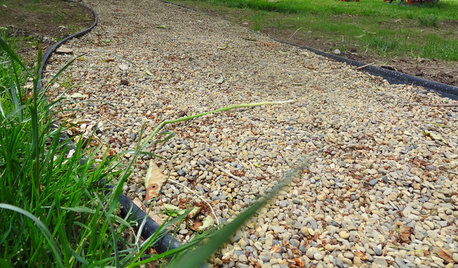
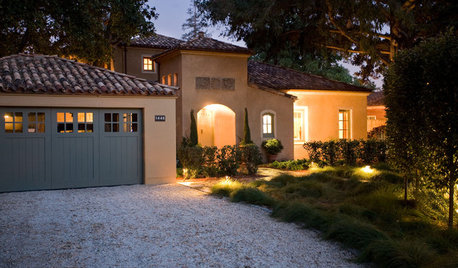
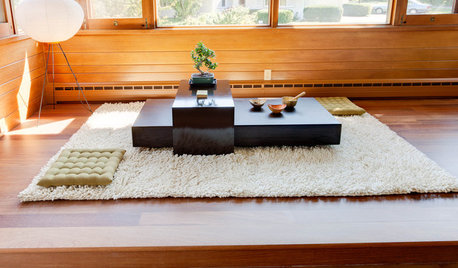
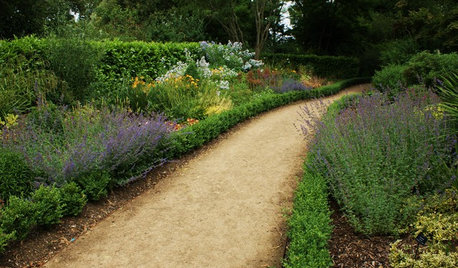
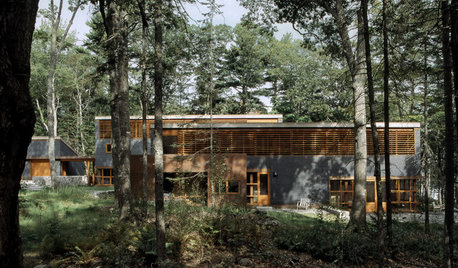
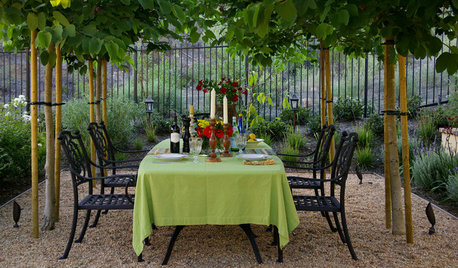
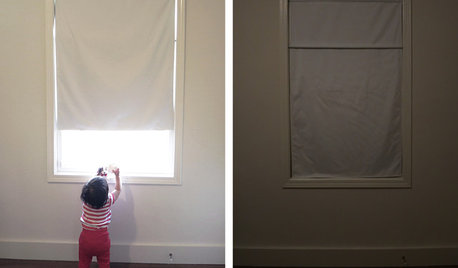
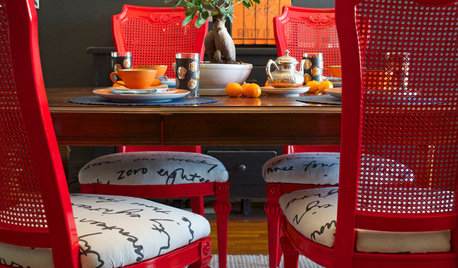
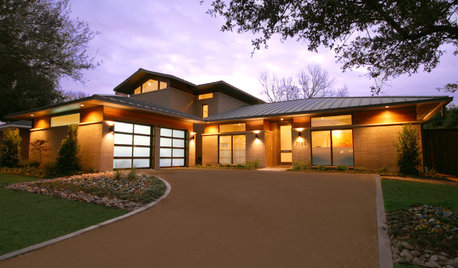
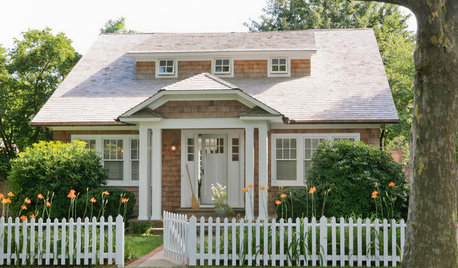








tapla (mid-Michigan, USDA z5b-6a)